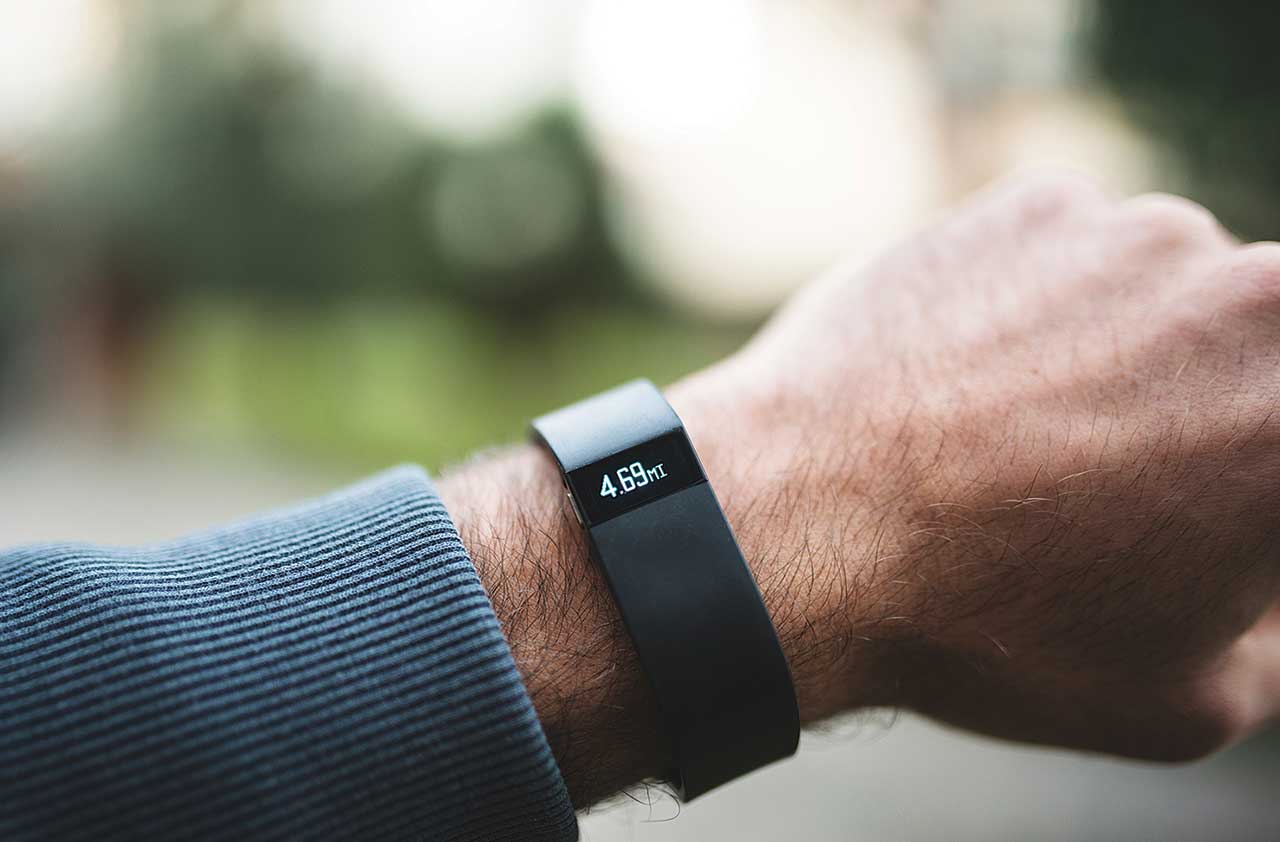Do Fitness Trackers Really Improve Your Health?
The devices aren't terribly accurate, but that may be beside the point: getting you out and about.


Millions of Americans now wear fitness bands on their wrists to count their steps daily. Some employers are using fitness trackers to set goals—and rewards—for employees. Health and life insurers are offering premium discounts for wearing one. School systems are even using them to enable self-directed physical education programs.
How accurate are they? Fitness bands contain an accelerometer, which tracks movement in every direction to calculate the number of steps you’ve taken. But studies show that over the course of a day, many trackers have error rates of 10% to 20%. Tufts University’s Health & Nutrition Letter suggests you verify that your stride-length setting is correct by going to a track with the exact distance marked and counting your steps as you walk it. If you walk, say, 100 feet in 40 steps, divide 100 by 40. You have a stride length of about 2.5 feet.
Most fitness bands are on track when it comes to counting steps when you’re walking, running or climbing stairs—usually coming within 1% to 4% of your actual step count, says Alex Montoye, an assistant professor at Alma College who studies wearables. The devices are also good at not awarding credit for stationary activities with a lot of wrist movement, such as typing or shuffling papers.

Sign up for Kiplinger’s Free E-Newsletters
Profit and prosper with the best of expert advice on investing, taxes, retirement, personal finance and more - straight to your e-mail.
Profit and prosper with the best of expert advice - straight to your e-mail.
But the trackers fall short when it comes to measuring your activity as you’re doing household chores, such as sweeping, washing dishes, cleaning or gardening. According to Montoye’s recent study at Ball State University, most fitness bands underestimate the amount of calories burned when doing tasks around the house by 27% to 34%. Also worth noting: The bands often fail to capture your steps when you’re pushing a grocery cart, lawn mower or baby stroller; if you want credit for those exertions, consider slipping the band into a pants or skirt pocket.
Before you choose a fitness tracker, consider the features you’re looking for. A simple step counter, such as the Fitbit Zip or Jawbone UP Move, will run you $50 to $60. At the high end, the Fitbit Surge ($250) will not only count steps but also track your heart rate and sleep patterns—plus it offers GPS tracking and has a 1.25-inch screen to alert you to text messages sent to your smartphone. If you want to measure your heart rate and monitor your sleep but don’t need the other advanced features, consider the Fitbit Charge HR ($150) and the Jawbone UP3 ($130). (The Apple Watch has a built-in workout application to track your activity, and you can load a sleep-monitoring app from the iTunes store.)
Virtual coaching. Despite missteps when it comes to recording your activity, wearable trackers can be useful for improving your daily workout. Because the majority of adults’ exercise comes in the form of walking, says Montoye, your step count should provide a good ballpark of your daily activity.
And for many fitness-band wearers, the precise number of steps logged matters less than the motivation to get up and move around. The bands can fuel competition to outwalk friends and encourage couples to take an evening walk. According to Harvard Women’s Health Watch, numerous studies have focused on activity levels of women older than 50. Those who wore fitness trackers significantly increased the time they spent doing moderate to vigorous activity.
Get Kiplinger Today newsletter — free
Profit and prosper with the best of Kiplinger's advice on investing, taxes, retirement, personal finance and much more. Delivered daily. Enter your email in the box and click Sign Me Up.

-
 When Should You Hand Over the Keys — to Your Investments?
When Should You Hand Over the Keys — to Your Investments?The secret to retirement planning? "The best time to hand over the keys is before you’ve realized you need to hand over the keys."
By Maurie Backman
-
 A checklist for high-net-worth individuals looking to maintain and grow their wealth.
A checklist for high-net-worth individuals looking to maintain and grow their wealth.A strategic guide to managing, preserving, and expanding your wealth for long-term financial security.
By Dori Zinn
-
 What Does Medicare Not Cover? Eight Things You Should Know
What Does Medicare Not Cover? Eight Things You Should KnowHealthy Living on a Budget Medicare Part A and Part B leave gaps in your healthcare coverage. But Medicare Advantage has problems, too.
By Donna LeValley
-
 Roth IRA Contribution Limits for 2025
Roth IRA Contribution Limits for 2025Roth IRAs Roth IRA contribution limits have gone up. Here's what you need to know.
By Jackie Stewart
-
 Four Tips for Renting Out Your Home on Airbnb
Four Tips for Renting Out Your Home on Airbnbreal estate Here's what you should know before listing your home on Airbnb.
By Miriam Cross
-
 Five Ways to a Cheap Last-Minute Vacation
Five Ways to a Cheap Last-Minute VacationTravel It is possible to pull off a cheap last-minute vacation. Here are some tips to make it happen.
By Vaishali Varu
-
 How to Figure Out How Much Life Insurance You Need
How to Figure Out How Much Life Insurance You Needinsurance Instead of relying on rules of thumb, you’re better off taking a systematic approach to figuring your life insurance needs.
By Kimberly Lankford
-
 Amazon Big Deal Days Is Coming! We’ve Got All the Details
Amazon Big Deal Days Is Coming! We’ve Got All the DetailsAmazon Prime To kick off the holiday season with a bang, Amazon Big Deal Days runs Tuesday, October 8 and Wednesday, October 9.
By Bob Niedt
-
 How to Shop for Life Insurance in 3 Easy Steps
How to Shop for Life Insurance in 3 Easy Stepsinsurance Shopping for life insurance? You may be able to estimate how much you need online, but that's just the start of your search.
By Kaitlin Pitsker
-
 Five Ways to Shop for a Low Mortgage Rate
Five Ways to Shop for a Low Mortgage RateBecoming a Homeowner Mortgage rates are high this year, but you can still find an affordable loan with these tips.
By Daniel Bortz